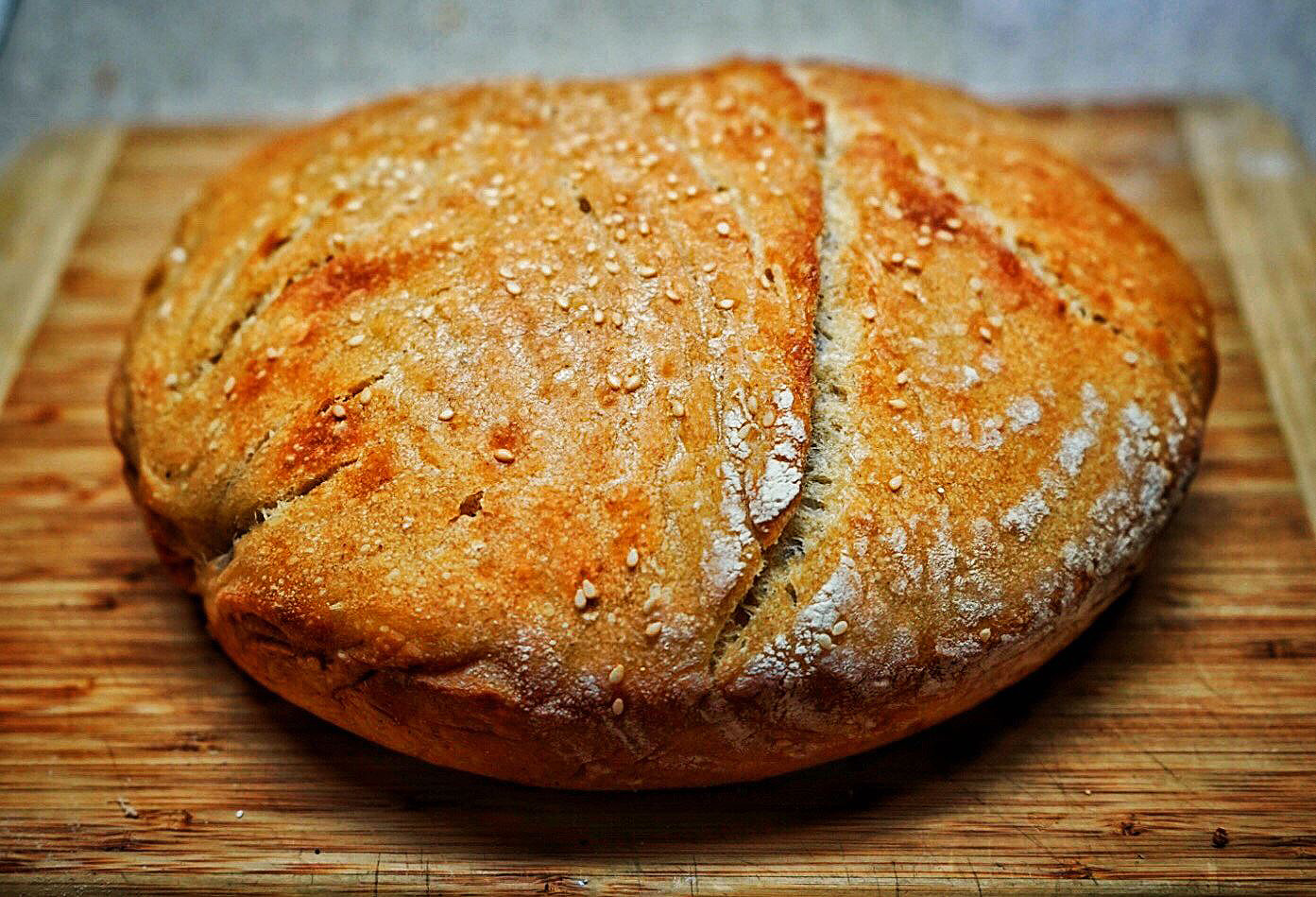In The Dominion Post’s ongoing Wednesday feature, Quarantine Kitchen, we highlight dishes prepared by readers, staffers and chefs at our local restaurants, in an effort to keep us connected through food.
This week, we bring you one of the food world’s most enduring staples: Bread.
Bread, as they say, is life. It spans cultures, finding a place on the table all around the world. It is such a symbol of shared enjoyment that we use the phrase “breaking bread” to mean time well-spent with others, around nourishment.
And when it comes to loaves, reader Laura Blanciforti says this sourdough number can’t be beat.
It’s tasty, it’s simple — and it doesn’t use yeast, which has been in short supply during the pandemic (lots of busy bakers out there, apparently).
“Sourdough is a great way to make bread when you don’t have yeast,” she said. “It is a natural forming yeast. One has their own home-grown Morgantown cultured sourdough. Sourdough bread is very popular during this quarantine. Unfortunately, one does need flour and there have been shortages of this as well.”
But if you have some flour on hand — or are able to score a bag at your favorite grocery — you won’t regret digging into your valuable stores for this recipe.
Making one’s own bread might not be the easiest thing in the world, Blanciforti acquiesces, but the effort won’t be misspent.
“It can be challenging but is well worth it, especially if you like the smell of bread baking.” she said.
SOURDOUGH BREAD
Makes: 1 loaf
-500 grams of all-purpose flour — you can use some whole wheat flour like 50-150 grams of the 500 if you like or of any other flour you have hanging around
-400 grams of water (I use filtered water) — this gives you 80% hydration, less makes a very sticky dough, though this is sticky too. Do not add more flour!
-75 grams of fed starter*
-8 1/2 to 9 grams of salt
Mix the flour and water and let it sit for about 45 minutes
Add the starter and salt, mixing all well.
Instead of kneading, there is a stretch, pull and fold process that is done next. Here, if the dough is very sticky, wet your hands with cold water.
Pull up a piece of dough, stretch and fold the dough into the middle of the bowl about 4 turns of the bowl. Do this every 30-45 minutes for 4-5 times, until the dough is smooth and supple. This is a noticeable texture change, from a shaggy mess to a smooth and supple form, as a baby’s bottom.
Let the dough rise until double (4-6 hours) or refrigerate overnight — This makes it more sour by slowing the fermentation.
When ready, flour your board and pour out the dough. Form it into a rectangle or a round depending on your cooking pan method.
You can use a Dutch oven or a pizza stone. Let it sit for 30 minutes.
If you have a bread basket or banneton (if not, get a deep bowl and place a cotton dish towel or pillowcase in it), generously flour it.
Fold the dough into the center and pull dough towards you in a circular motion. You should feel a tightness forming in the dough.
Let it sit in its container to rise for 2-3 hours. You can also refrigerate here for 7-12 hours, if you did not before and want to still.
Then let it sit at room temp for about 2 hours before baking.
The best way to tell if it’s ready to bake is to poke the top, it will dent slightly and slowly come back up. If your poke stays down, let it rise longer.
While the dough is having its last rise, put your Dutch oven or baking stone in the oven and heat at 500 degrees for 30 minutes.
Then place some parchment paper over your rising container, and drop the bread onto it. You can then cut the dough with a razor blade or sharp knife, or lamè, if you have one. and carefully drop into the pan. This can be any variety as a square or curve or an X.
The pre-heating of the Dutch oven creates steam and helps the dough to open up. If it’s not steamy, you can spray with some water and close the lid.
If using a Dutch oven, cook for 20 minutes with lid on, then uncover for 20 minutes and lower heat to 450 degrees.
If using a pizza stone or flat pan, you can spray the inside of your oven to create the steam or add some ice cubes to a cast iron pan and create steam.
If you don’t have a Dutch oven or baking stone, one could use a tray and place a steel bowl over the dough, creating a contained environment.
Cook for 35-40 minutes. Bread is done when it has browned, and when you tap on the bottom and hear a hollow sound. If you have a thermapen, the internal temp should be about 207-210 degrees.
*Fed healthy/active sourdough starter — feed 1-2 times a day before baking and make sure it’s doubling within 3-5 hours. It’s best to use equal amounts of flour & water.




